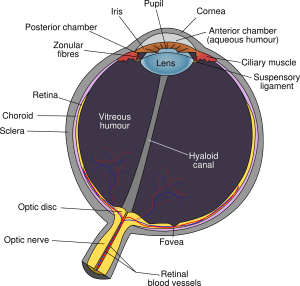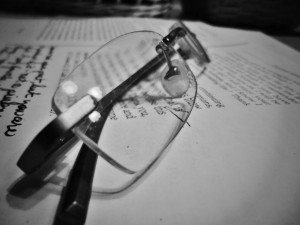As we get older, we find ourselves slowing down, and we might not have the strength or energy to do things like we did before. It’s a natural part of aging, and it affects all of us. With our changing bodies, you might never notice your eyes are changing too. Though it can seem to happen out of the blue, as you get older you might notice your vision getting blurry when you’re trying to read things up close. You might have to hold papers at arm’s length to read them, or sit far away from the computer screen. Your eyes might hurt if you don’t or worse, you get headaches. And even if you’ve had 20/20 vision all your life, you might find yourself needing glasses for the first time in your life. If you already have glasses, you might find you need to change your prescription to add in bifocals. So what’s happening? It’s a condition known as presbyopia. What’s that? According to the American Optometric Association (AOA), “Presbyopia is a vision condition in which the crystalline lens of your eye loses its flexibility, which makes it difficult for you to focus on close objects … Presbyopia may seem to occur suddenly, but the actual loss of flexibility takes place over a number of years. Presbyopia usually becomes noticeable in the early to mid-40s. Presbyopia is a natural part of the aging process of the eye. It is not a disease, and it cannot be prevented.” If you have presbyopia, you’re not alone. In a 2008 study called “Global Vision Impairment Due to Uncorrected Presbyopia,” published in the Archives of Ophthalmology, researchers found that 1.04 billion people have vision problems due to presbyopia. That number is only expected to grow too, from 1.4 billion people by 2020 up to 1.8 billion people by 2050. Luckily, we live in a world where we have glasses and corrective lenses to fix the effects of presbyopia. But before we get to that, let’s find out everything you should know about it.
Why Does Presbyopia Occur? As the AOA says, this condition is caused by the loss of flexibility in your eye. It usually occurs in middle to old age, and it’s different from other vision-related problems. While being nearsightedness or farsightedness, etc., is the result of genetics or the environment, presbyopia occurs naturally. So what’s happening to your eye as you get older? First, a little Eye 101 (and a little Physics 101): Everything we see is because of light; specifically, how light reflects off objects. When we look at something, the light from that object goes into our eye through the transparent outer layer of the eye known as the cornea. The cornea bends or refracts the light into our pupil, while our iris makes our pupil bigger or smaller based on how much light is coming in. That light goes through our lenses, where it gets bent some more and focuses it on our retina at the back of our eye. In the retina, there are little cells called rods and cones, which transmits that light to our brain and lets it make sense of what we’re see. (Fun fact: Everything we see is actually an inverted image; technically we’re seeing everything upside down, but our brains flip the images we see things right-side up.) As I mentioned, the lenses of our eyes are really flexible thanks to a circular muscle surrounding it. As Mayo Clinic explains, “When you look at something at a distance, the circular muscle relaxes. When you look at something nearby, the muscle constricts, allowing the relatively elastic lens to curve and change its focusing power.” But over time, the lenses start hardening up, making it difficult for them to change their shape and constrict to see images. That’s why, with presbyopia, our vision gets blurry when we look at things up close. The lenses are no longer working like they used to. Other Causes of Presbyopia While presbyopia is a natural part of aging, there might be other reasons it might occur. If you have a disease like diabetes, multiple sclerosis or cardiovascular diseases, they might give you what’s called “premature” presbyopia. This is presbyopia for those under 40 years of age. Certain drugs might cause premature presbyopia symptoms, according to the Mayo Clinic. Those include antidepressants, antihistamines and diuretics. If you suspect you have premature presbyopia, talk to your eye doctor.
What do I do if I Have Presbyopia? Luckily, this is easy! If you’re over the age of 40 and have any of the symptoms listed below, immediately go to your eye doctor for an examination.
- A tendency to hold reading material farther away to make the letters clearer
- Blurred vision at normal reading distance
- Eyestrain or headaches after reading or doing close work
Source: Mayo Clinic A simple eye exam will determine if you have presbyopia. But if you can’t make it to the eye doctor right away, a pair of reading glasses can help until you get your appointment. Be sure to tell your eye doctor if you are taking any medications or have any health problems, as those can cause premature presbyopia too. There are a number of treatment options for presbyopia. The simplest of course is to get glasses. You might also try special contact lenses that can act as bifocals in your eyes. There are surgery options too, but the results can vary: You still might end up needing reading glasses to see up close. Before you decide on your treatment, talk to your eye doctor about all your options. If you do decide to get glasses to treat your presbyopia, remember that http://www.fixmyglasses.com is here for you if they ever need any repairs.



